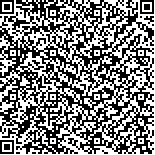本文已被:浏览 1922次 下载 4215次
投稿时间:2009-12-14 修订日期:2010-05-31
投稿时间:2009-12-14 修订日期:2010-05-31
中文摘要: 许多大型能源项目的前期可行性论证工作都必须计算干湿球温度的设计参数,但从2001年开始,按照中国气象局的要求,安徽省各台站陆续将干湿球温度表更换为湿敏电容传感器,至2007年,所有台站的自动观测设备安装完毕。新的自动观测仪器对湿球温度不再进行观测。为了解决缺少资料的问题,设计了一种计算湿球温度的循环迭代算法,并把结果数据与查表计算的结果相比较,误差小于0.1 ℃的占92.52%,小于0.2 ℃的占99.49%,结果可靠,与传统查表方法相比,具有方便快捷的特点,适合作为补充历史湿球温度序列的方法,满足了气候应用服务的需要,可以在电站设计标准计算上得到广泛的应用,也可以作为地面历史资料审核程序的有益补充。
中文关键词: 湿球温度, 误差分析, 迭代算法
Abstract:Many climate feasibility demonstration studies of major energy projects have to involve the designed parameters of dry or wet bulb temperature, but since 2001, according to the request of the China Meteorological Administration, observation stations of Anhui begin to change the observation apparatus to humidity sensors. The new apparatus does not observe wet bulb temperature. To solve this problem about data shortage, we have designed a looping iterative scheme to compute wet bulb temperature and compared
the calculated results with data from humidity table. The comparison results show that the errors less than 0.1 ℃ are within 92.84 percent, the errors less than 0.2 ℃ are within 99.80 percent. The method is reliable and is more convenient and fast comparing with the traditional method. Thus it is suitable for becoming the solution of complement wet bulb data series, the scheme meets the requirement of climate feasibility demonstration work and can be widely used in power station designing, also it can be a helpful complementarity for ground historical data checking programs.
文章编号: 中图分类号: 文献标志码:
基金项目:安徽省气象局《安徽省气象数据资源建设与共享服务》(2005DKA31700 06 22)资助
引用文本:
程智,吴必文,朱保林,郭秀云,2011.湿球温度循环迭代算法及其应用[J].气象,37(1):112-115.
CHENG Zhi,WU Biwen,ZHU Baolin,GUO Xiuyun,2011.Wet Bulb Temperature Looping Iterative Scheme and Its Application[J].Meteor Mon,37(1):112-115.
程智,吴必文,朱保林,郭秀云,2011.湿球温度循环迭代算法及其应用[J].气象,37(1):112-115.
CHENG Zhi,WU Biwen,ZHU Baolin,GUO Xiuyun,2011.Wet Bulb Temperature Looping Iterative Scheme and Its Application[J].Meteor Mon,37(1):112-115.

